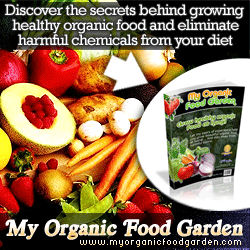 This article is a relaxed, but informative introduction to people who are quite new to gardening and are looking to start growing vegetables. It provides step-by-step instructions for beginners which guide the reader through selecting a suitable growing space to choosing plants. It also provides some general and specific tips for vegetable growing and highlights some of its benefits in terms of saving money and improved relaxation.
This article is a relaxed, but informative introduction to people who are quite new to gardening and are looking to start growing vegetables. It provides step-by-step instructions for beginners which guide the reader through selecting a suitable growing space to choosing plants. It also provides some general and specific tips for vegetable growing and highlights some of its benefits in terms of saving money and improved relaxation.
Now you know what vegetables you want to grow you need to buy some seeds. There are many places that stock theme, anywhere from garden centers to news agents. Typical vegetable seeds are quite cheap, usually under two or three pounds. However, the number of seeds that come in a packet varies significantly based on the type of vegetable. For example, a packet of carrot seeds may contain about a hundred seeds whereas a packet of bean seeds may only contain about twenty. This variation is usually proportional to the seed’s rate of germination, in effect far fewer carrot seeds germinate than bean seeds.
Once you have the seeds you would like to grow the next step are to plant them. This is usually the most labor intensive part of the process. The majority of seed packets will have basic instructions for sowing, maintaining and harvesting the crop you will hopefully produce. If you don’t have any instructions to hand then there is plenty of useful information on the Internet and your local library is also a good resource. There are many different types of vegetables and the growing requirements and difficulties associated with each of them could fill several books, so rather than addressing all of these the rest of this article is going to focus on general growing tips.
One of the most fundamental elements of a plant’s success in its environment is the soil that it’s grown in. Identifying your soil type and making sure that it’s compatible with your plants can make a real difference to their growth. Your soil type is not completely fixed though, adding some fertilizer from a garden center can alter its properties and make a noticeable difference in a plants health. This subject goes hand-in-hand with feeding plants as they grow. It’s important to keep a careful eye on the plant feed that is being given to vegetables that you plan to eat, what you put on the roses may not be quite so good when eaten! There are several special, organic feeds out there for vegetable plants that are very good. An interesting experiment is to buy a few and try them out on a couple of the same plants to see the differences in performance.
One of the biggest difficulties with growing vegetables is other animals eating them before you do. There are two main ways to prevent this: growing your vegetables in your house, or growing them inside a greenhouse. Growing vegetables in your house is possible, especially if you have a conservatory, and can be a nice project to do with young children. However, the soil and dead leaves that inevitably make their way onto the carpet and throughout the house discourage most people from doing this on any scale. Greenhouses are an excellent alternative as they allow you to protect your plants from almost any pest, however they are expensive and not always a viable solution.
Cristopher K. Abbott is an avid organic gardening advocacy and photographer. To learn more about gardening, visit his website at: best organic gardening
Article Source: http://EzineArticles.com/?expert=Cristopher_K_Abbott

Speak Your Mind